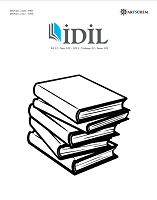LUDWİG VAN BEETHOVEN NO 3 OP. 69 LA MAJÖR PİYANO VE VİYOLONSEL SONATININ TEKNİK VE MÜZİKAL ANALİZİ
THE ANALYSIS OF THE CELLO SONATA NO.3 IN A MAJOR, OP.69 (LUDWIG VAN BEETHOVEN) FROM TECHNICAL AND MUSICAL PERSPECTIVES
Author(s): Buğra Kaan AYRANCI, Tanju AraboğluSubject(s): Music, Aesthetics, 18th Century, 19th Century, History of Art
Published by: Sanat ve Dil Araştırmaları Enstitüsü
Keywords: Violoncello; Beethoven; Sonata Op.69 No. 3;
Summary/Abstract: Ludwig van Beethoven, the famous German pianist and composer of the Classical Period, who lived in Vienna between the years of 1770 and 1827, composed works for piano, chamber music, and orchestra during his 56 years of life and is considered one of the most important composers in music history. There are distinctly three main periods in Beethoven's creative career, the early, middle, and late periods. Beethoven, in the first period of his composing career, had the opportunity to work with his contemporaries, J. Haydn and W.A. Mozart, and was influenced by their creativity. The middle period which covers the years 1802-1813 is when Beethoven achieved his own composing style. Among the important works of this period are the Waldstein (Sonata in C major No. 21 Op. 53), the Appassionata (Sonata No. 23 in F Minor, Op. 57), Egmont and Corolian Overtures, his 5th, 6th, 7th, and 8th symphonies and the one which will be the focus of this study: The Cello Sonata No. 3 in A major, Op. 69. This study aims to analyze Beethoven’s Sonata No. 3 in A Major, Op. 69 (Grande Sonate) with respect to its structural form, performance techniques and examine the manuscript and the examples of the first edition. The study also aims to be a source for performers and researchers who want to carry out a project related to the work.
Journal: İdil Sanat ve Dil Dergisi
- Issue Year: 12/2023
- Issue No: 102
- Page Range: 269-279
- Page Count: 11
- Language: Turkish

